Solar Power Solutions
The DIY Guide to Catch the Sun
From Grid-Tie to Off-Grid Solar Panel Systems, Everything You Need to Know to Design and Install Your Photovoltaic System at Home and Beyond
Energy Nest
Disclaimer
The steps outlined in this book are based on the author's personal experience in the solar industry in the last decade. Therefore it is advised to take note of all the safety standards mentioned in this book and the safety standards in the reader's country. This book is meant for educational purposes only and helps you to learn how a solar PV rooftop system is designed and implemented. Please note that improper use of the equipment and/or procedure/s can lead to lethal damage. Thus, it is advised to take all preventive and precautionary measures to safeguard your life from all possible threats. This book is for educational purposes only, and we encourage you to seek professional advice as per specific circumstances and requirements before implementing or acting upon any information contained in this book. Further, we make no claims, promises, or guarantees about the accuracy, completeness, or adequacy of the content of this book, and disclaim liability for errors and omissions. Any action that the readers may take upon the information contained in this book shall be entirely at the readers' own risk. We shall not be liable for any damages or losses in connection with the use of this book. Each country has a different set of electrical standards and compliances' which are meant to be followed before installing solar on the rooftop. Different states have different procedures for the installation of solar. Without the approval of the state authorities, installing a solar plant is illegal. Hence, it is advised that after the designing of the plant on paper/ software based on this book, the reader shall take permission from the local authorities. Popularly known as permit package, the reader is advised to make a permit plan based on the designs in this book and submit and verify this plan with the authorities before installing solar.
Copyright 2020 by Energy Nest
All rights reserved.
Table of Contents
Introduction
E very hour the Earth is hit with more energy from the sun than the entire world consumes in a year. In the last two decades the contribution of solar energy to the worlds total energy supply has grown significantly. Solar Panel Systems for homes are increasing in popularity and decreasing in price.
With the new technologies and a bit of ingenuity solar is cheap, easy, and versatile. It can power up your home, your van, your boat, your garden, your shed, for no running costs at all!
Many homeowners are discovering the advantages of Solar Power and you may have even seen quite a few systems being installed in your own neighborhood. If youre solar curious and want to learn more it can all seem a bit overwhelming.
Moreover, solar power is the most efficient way to power up a mobile home, such as an RV or a boat, without relying on shore power. Isnt it wonderful to think that we have the freedom to travel in the most remote places on earth and rely on the energy that is raining down on us in the form of photons?
Youre probably wondering: How much does it cost to install a solar system, and how much money will I really save on my electricity bill?
This book offers you a complete overview of solar energy so you can have a strong foundation of knowledge and make the best possible educated decisions regarding solar power for your home or your mobile home.
First things first, what is a solar panel? A solar panel (or photovoltaic panel) is a panel made of solar cells. Solar cells are the essential component by which light is converted into electrical energy and they are usually made of crystalline silicon.
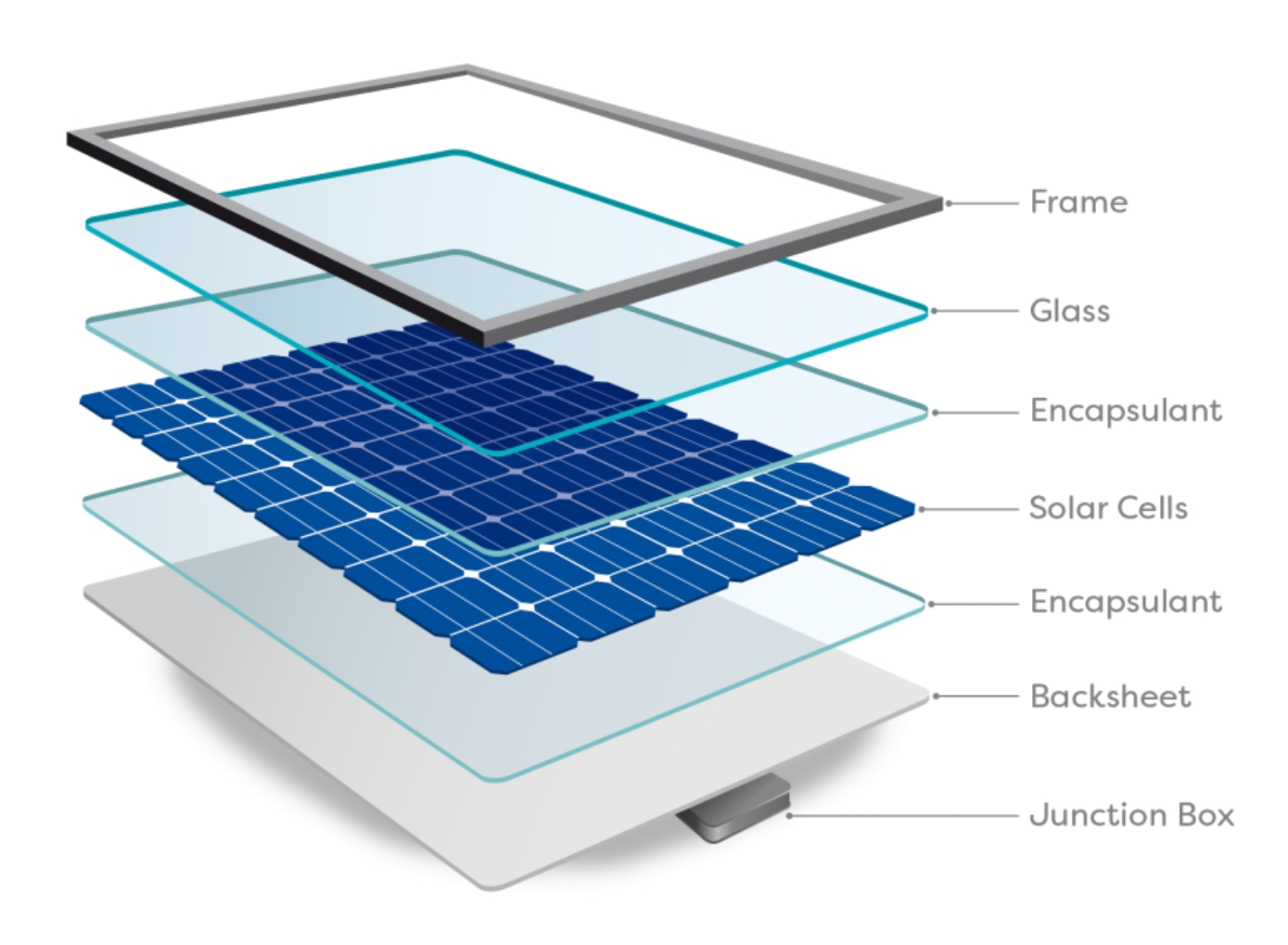
Each solar panel usually contains from 32 up to 96 solar cells. Depending on the way solar cells are made, solar panels are categorized as polycrystalline, monocrystalline or thin film. The first two categories, which are the most common types of solar panels, are made of crystalline solar cells. The third category (thin film) is made of amorphous silicon. Apart from the typical framed solar panel, there are also other types of products that can be used in residential applications.
Frameless solar panels have been on the market for more than a decade. Also, solar shingles and solar tiles popularized by the tesla solar roof are two types of products that are becoming more popular among residential applications because they combine the technology of solar panels with aesthetic integration to the house.
Solar cells produce electricity by converting the tremendous solar energy that the earth receives every day in the form of sunlight and more specifically in the form of photons. Most typical commercial solar solutions convert sunlight to electrical energy at an average efficiency of 3 17% If we could break the sunlight into the smallest possible pieces, we would get photons. So, photons practically are the smallest possible energy packages of sunlight.
First of all, the top layer of solar cells have an anti-reflective coating which helps them collect as much light as possible. Right below, there is a main layer of a solar cell which is basically a sandwich of two silicon layers. These two layers are specially treated, so that the upper layer has a surplus of electrons while the bottom layer has a shortage of electrons. What is needed for the extra electrons to move from the upper to the bottom layer is a little bit of extra energy! And that energy is provided by the photons, when the sunlight hits the solar cells! When the solar panels are exposed to the light, electric current is generated! The more sunlight hits the solar panel, the more the electricity is produced.
Solar panels definitely do not generate electricity during the night, but you can store excess energy collected during the daytime in a large battery.
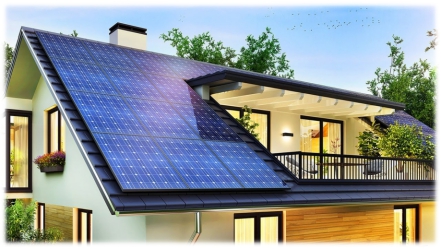
Generally, residential solar systems are separated into 2 main categories: off-grid and on-grid. In the case of an off-grid system, the electricity generated by the solar system will be used to cover 100% of the electrical usage of a home since the house is not connected to the electrical grid at all. This can be accomplished by using large batteries that will store any extra electricity produced during the day. The main disadvantage of an off-grid system is its cost, since the use of batteries increases the cost about 20-30% compared to an on-grid system.
Many jurisdictions do not allow you to operate your residence off grid, so youll have to check. In a on-grid system, the house where the solar panels are installed is connected to the main power grid. Electricity generated by the solar panels can either cover the electrical needs of the house or when you produce more electricity than needed, it is sent to the power grid. This leads us to net metering.




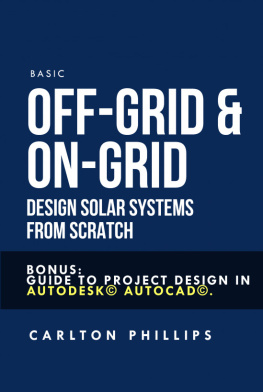
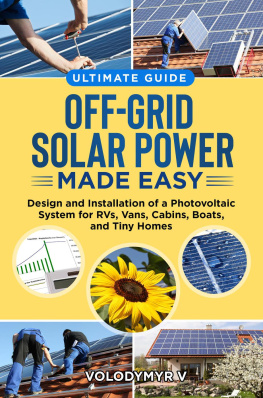
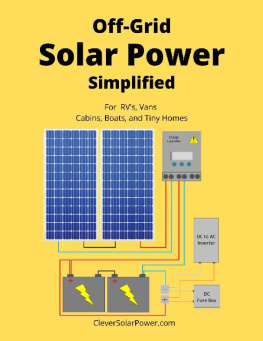
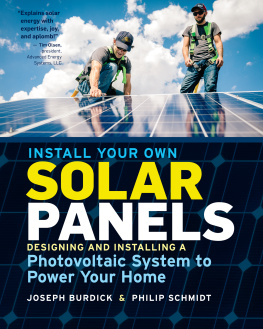
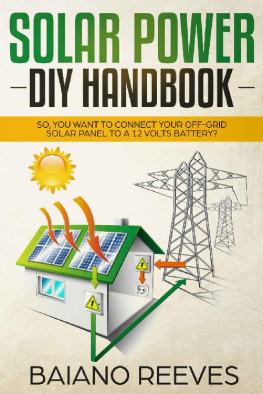


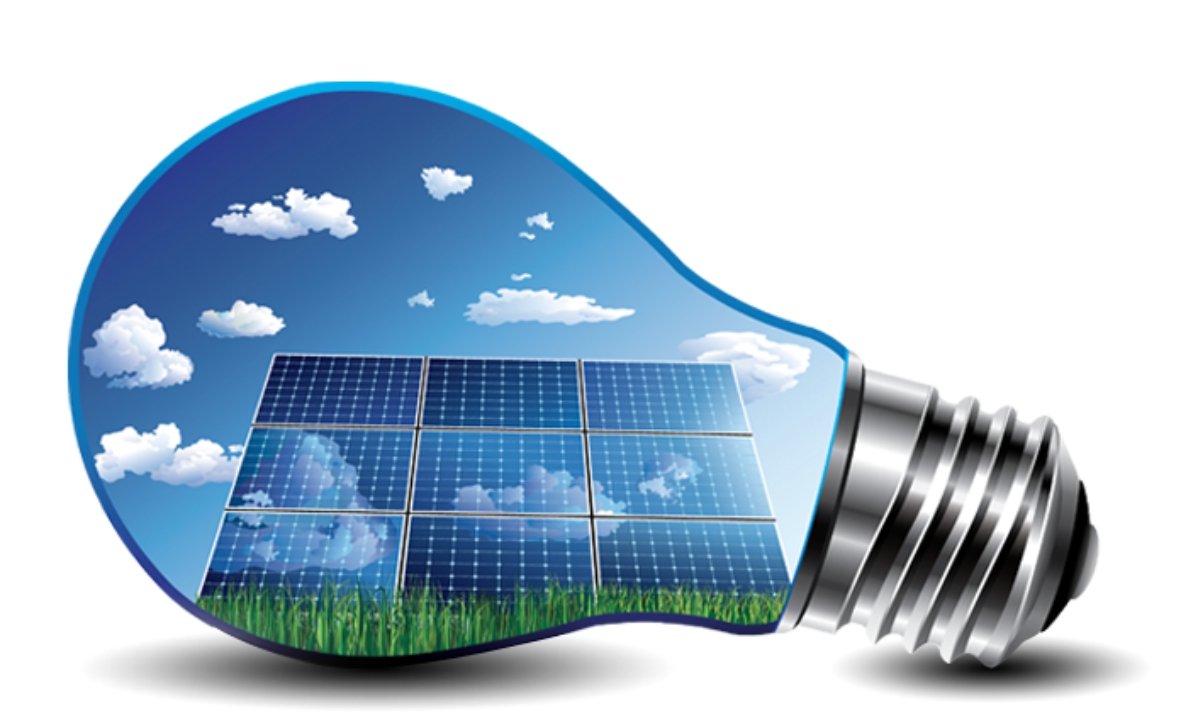
 Each solar panel usually contains from 32 up to 96 solar cells. Depending on the way solar cells are made, solar panels are categorized as polycrystalline, monocrystalline or thin film. The first two categories, which are the most common types of solar panels, are made of crystalline solar cells. The third category (thin film) is made of amorphous silicon. Apart from the typical framed solar panel, there are also other types of products that can be used in residential applications.
Each solar panel usually contains from 32 up to 96 solar cells. Depending on the way solar cells are made, solar panels are categorized as polycrystalline, monocrystalline or thin film. The first two categories, which are the most common types of solar panels, are made of crystalline solar cells. The third category (thin film) is made of amorphous silicon. Apart from the typical framed solar panel, there are also other types of products that can be used in residential applications. Generally, residential solar systems are separated into 2 main categories: off-grid and on-grid. In the case of an off-grid system, the electricity generated by the solar system will be used to cover 100% of the electrical usage of a home since the house is not connected to the electrical grid at all. This can be accomplished by using large batteries that will store any extra electricity produced during the day. The main disadvantage of an off-grid system is its cost, since the use of batteries increases the cost about 20-30% compared to an on-grid system.
Generally, residential solar systems are separated into 2 main categories: off-grid and on-grid. In the case of an off-grid system, the electricity generated by the solar system will be used to cover 100% of the electrical usage of a home since the house is not connected to the electrical grid at all. This can be accomplished by using large batteries that will store any extra electricity produced during the day. The main disadvantage of an off-grid system is its cost, since the use of batteries increases the cost about 20-30% compared to an on-grid system.